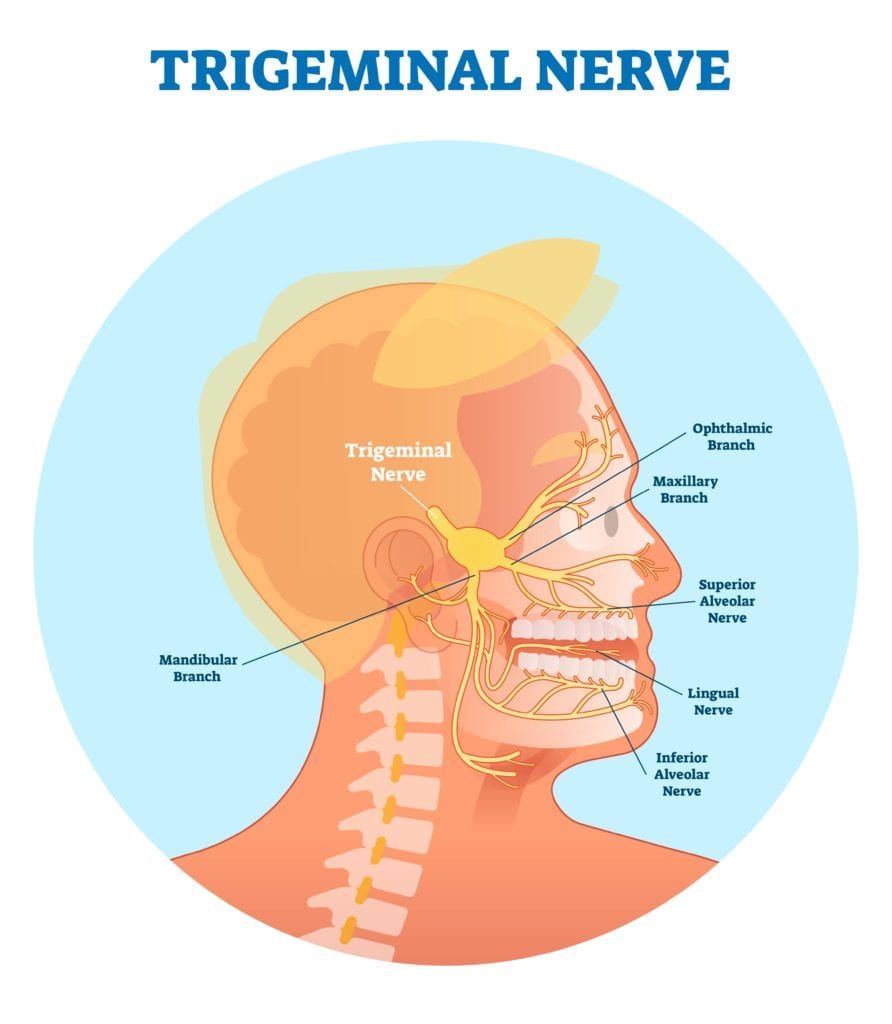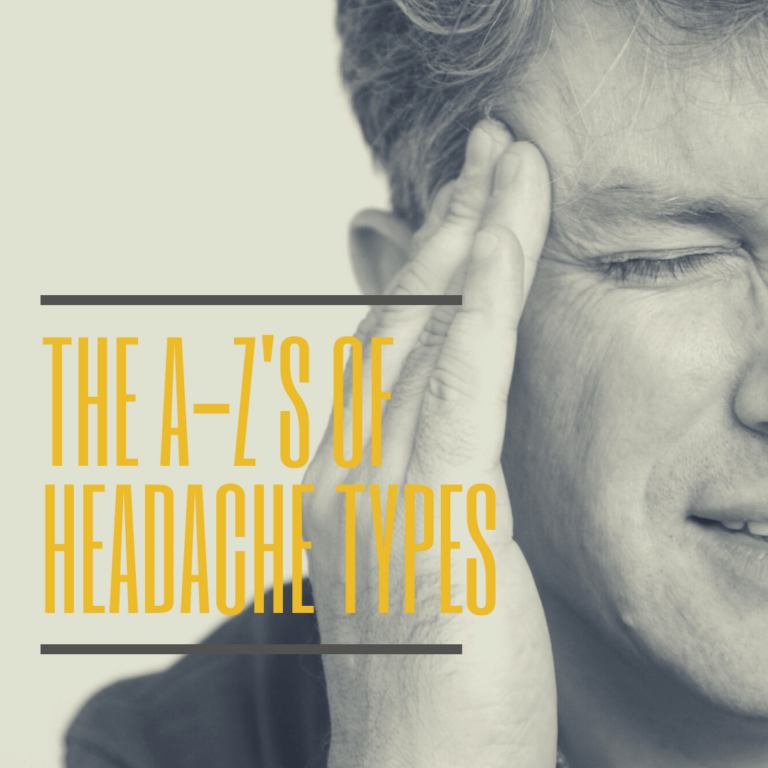Do you suffer from frequent headaches? If so, you’re not alone. Headaches are one of the most common medical conditions in the world. There are many different types of headaches, each with its own set of symptoms and causes. In this blog post, we will list all of the different types of headaches from A-Z. We’ll also discuss the symptoms, causes, treatment, and prevention of each type. So whether you’re dealing with a tension headache or a migraine with aura, we have you covered!
Allergy Headache:
Allergy headaches are caused by allergies to things like pollen, dust, or pet dander. Symptoms include sneezing, runny nose, watery eyes, and a headache. Treatment involves avoiding the allergens that trigger the headaches and taking over-the-counter antihistamines.
Aneurysm:
An aneurysm is a bulging blood vessel in the brain. It can rupture and cause a stroke. Symptoms include severe headache, vision problems, and paralysis. Treatment involves surgery to repair the aneurysm.

Caffeine-Withdrawal Headache:
A caffeine-withdrawal headache is caused by suddenly stopping the use of caffeine. Symptoms include a dull headache that is worse in the morning and improves throughout the day. Treatment involves slowly reducing caffeine intake over time and avoiding the excess use of caffeine.
Cervicogenic Headache:
A cervicogenic headache is caused by problems in the neck, such as muscle tension or a herniated disc. Symptoms include pain that radiates from the neck to the head, shoulder, or arm. Treatment involves physical therapy and exercises to stretch and strengthen the neck muscles. Treatment can also include pain medications, nerve blocks, or transcutaneous electrical nerve stimulation (TENS).
Chronic Daily Headache:
A chronic daily headache is a headache that occurs more than 15 days per month. It can be caused by things like stress, sleep problems, or medication overuse. Symptoms include a dull, constant pain. Treatment involves managing the underlying cause and taking pain relievers as needed.
Chronic Migraine:
A chronic migraine is a type of migraine that occurs 15 or more days per month. It can be caused by things like stress, sleep problems, or hormonal changes. Symptoms include severe headaches, nausea, and light sensitivity. Treatment involves managing the underlying cause and taking medications to prevent or relieve migraines. Botox can also sometimes be used.
Cluster Headache:
A cluster headache is a type of excruciating headache that occurs in clusters, meaning it comes and goes over a period of time. It is usually caused by things like stress, alcohol, or tobacco use. Symptoms include a severe, one-sided headache that is often accompanied by redness in the eye and a runny nose. Treatment involves managing the underlying cause and taking pain relievers as needed.
Depression and Headache:
Depression and headaches are often linked. Depression can cause headaches, and headaches can cause depression. Symptoms of depression include sadness, fatigue, and loss of interest in activities. Headache symptoms vary depending on the type of headache. Treatment involves managing the underlying causes and taking medications to relieve headaches and depression.

Eyestrain Headache:
An eye strain headache is caused by staring at a screen for too long, and it can also be caused by uncorrected vision problems. Symptoms include a headache, blurry vision, and eye pain. Treatment involves taking breaks from screens every 20 minutes and correcting vision problems.
Exertional Headache:
An exertional headache is caused by physical activity, such as running or lifting weights. Symptoms include generalized head pain that lasts for minutes or an hour and occurs during or after exercise. Treatment involves managing the underlying cause and taking pain relievers as needed.
Fasting Headache:
A fasting headache is caused by not eating for a long period of time. Symptoms include a throbbing headache in the front of the head that improves after eating. Treatment involves slowly breaking the fast and eating small meals throughout the day.
Fever Headache:
A fever headache is caused by a fever and the swelling of the blood vessels in the head. Symptoms include a throbbing headache, sweating, and nausea. Treatment involves managing the underlying infection and taking pain relievers as needed.
Giant Cell Arteritis:
Giant cell arteritis is an inflammation of the temporal arteries. It can cause headaches, jaw/ear pain, and vision problems. Symptoms include a throbbing headache, jaw pain, and vision problems. Treatment involves managing the underlying cause and taking steroids to reduce inflammation.
Hangover Headache:
A hangover headache is caused by drinking too much alcohol. Symptoms include a throbbing headache, nausea, and sensitivity to light and sound. Treatment involves replenishing lost liquids and drinking in moderation.
Headache Attributed to Infection:
A headache attributed to infection is caused by an infection, such as a cold or the flu. Symptoms include a throbbing headache, fever, and nausea. Treatment involves managing the underlying infection and taking antibiotics as needed.
Hemiplegic Migraine:
A hemiplegic migraine is a type of migraine that can cause paralysis. Symptoms include a throbbing headache, weakness, and numbness on one side of the body. This type of headache can mimic the symptoms of a stroke. Treatment involves managing triggers, supplementing magnesium, getting enough sleep, and taking medications to prevent or relieve migraines.
Hunger Headache:
A hunger headache is caused by not eating for a long period of time. Symptoms include a throbbing headache that improves after eating. Treatment involves slowly breaking the fast and eating small meals throughout the day.
Hypertension Headache:

A hypertension headache is caused by high blood pressure. Symptoms include a generalized “hairband” headache that is more prevalent in the morning and improves as the day goes on. Treatment involves managing the underlying cause and taking medications to lower blood pressure.
Menstrual Headache:
A menstrual headache is a type of headache that occurs before, during, or after menstruation. Symptoms include a throbbing headache, nausea, and sensitivity to light and sound. Treatment involves biofeedback and taking pain relievers as needed.
Migraine with Aura:
A migraine with aura is a type of migraine that can cause visual or other warning symptoms before the headache. Symptoms include a throbbing headache, visual disturbances, and nausea. Treatment involves managing the underlying triggers and taking medications to prevent or relieve migraines.
Migraine Without Aura:
A migraine without aura is a type of migraine that does not cause visual or other symptoms before the headache. Symptoms include a throbbing headache, nausea, and sensitivity to light and sound. Treatment involves managing the underlying triggers, ice packs, and taking medications to prevent or relieve migraines.
New Daily Persistent Headache:
A new daily persistent headache is a type of headache that occurs for less than three days in someone with no prior history of headaches. Symptoms include a rapid developing headache. Treatment is not always needed, but can involve anti-seizure medications.
Post-Traumatic Headaches:
Post-traumatic headaches are caused by a head injury. Symptoms often occur after a traumatic event and can include a throbbing headache, dizziness, and nausea. This type of headache also occurs daily and can be resistant to treatment. Treatment involves anti-inflammatory medications, propranolol, or biofeedback.
Sinus Headache:
A sinus headache is caused by an infection of the sinuses. Symptoms include a throbbing headache usually behind the eyes or around the nose, fever, and nasal congestion. Treatment involves managing the underlying cause of the sinus infection and taking antibiotics or decongestants as needed.
TMJ Headache:
A TMJ headache is caused by a problem with the temporomandibular joint. Symptoms include a throbbing headache, jaw pain, and ear pain. Treatment involves managing the underlying cause (usually dental) and taking pain relievers as needed.
Tension Headache:
A tension headache is caused by stress or muscle tension. Symptoms include a throbbing headache, neck pain, and shoulder pain. Treatment involves rest, relaxation techniques, and taking pain relievers as needed.

Tic Douloureux Headache (Trigeminal Neuralgia):
A tic douloureux headache is a type of headache that affects the trigeminal nerve. Symptoms include a throbbing headache, facial pain, and jaw pain. Treatment involves managing the underlying cause and taking anticonvulsant and/or muscle relaxant medications to prevent or relieve symptoms.
Thunderclap Headache:
A thunderclap headache is a type of headache that comes on suddenly and severely. Symptoms include a throbbing headache, nausea, seizures, confusion, and vomiting. Treatment involves seeking out an emergency medical evaluation to rule out life-threatening conditions.
Tumor Headache:
A tumor headache is caused by a growth or mass in the brain. Symptoms include a throbbing headache, nausea, and vomiting. Treatment involves managing the underlying cause and taking medications to prevent or relieve migraines.
In Conclusion
While there are many different types of headaches, these are some of the most common. If you are experiencing any of these symptoms, be sure to schedule a consultation with your local neurologist. Neurologists are headache specialists who can help accurately diagnose and effectively treat your headaches. With the proper diagnosis and treatment, you can finally find relief from your headaches.

Dr. Kashouty, a diplomate of the American Board of Psychiatry and Neurology (ABPN), practices general neurology with fellowship trained specialization in clinical neurophysiology. Dr. Kashouty finds the form and function of the nerves and muscles the most interesting part of neurology, which is what led him to specialize in neurophysiology with more emphasis on neuromuscular conditions. He treats all neurological diseases, but his main focus is to treat and manage headaches, movement disorders and neuromuscular diseases.




